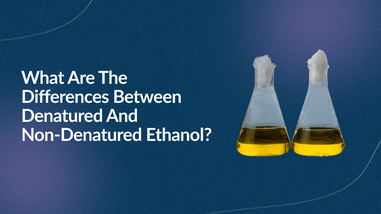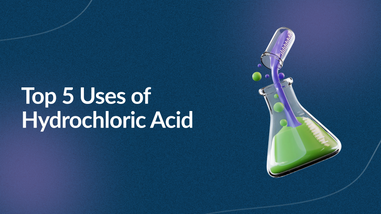- No products in the cart.
As an active member of the solar energy industry, you’ve already made great strides in creating greener energy alternatives for the world. However, this industry isn’t without its own environmental faults. A major concern in the manufacture of solar panels is the generation of hazardous byproducts, silicon tetrachloride in particular. This chemical can be hazardous to not only the environment, but also the employees and facilities that handle it. In this post we will go over some steps you can take to increase safety and decrease hazards associated with the manufacture of silicon tetrachloride solar panels in your laboratory.
The process of manufacturing polysilicon, an important component of solar panels, generates the hazardous byproduct silicon tetrachloride. This chemical, when handled incorrectly, can be hazardous to humans and the environment. It has the capacity to burn skin, damage lungs, and creates hydrochloric acid when exposed to water. Silicon tetrachloride waste generated by solar panel manufacturing facilities has a history of harmful effects on local communities as a result of improper disposal. However, all is not lost in the green-ness of solar panel manufacturing. There are some concrete steps you can take to promote safety in chemical handling and reduce the amount of waste generated.
Handle and dispose of chemical waste responsibly
Perhaps most importantly, keep staff safe from chemical hazards. You can greatly increase chemical safety in your facility with a few simple tactics:
-
Clearly label and organize all chemicals
-
Store all chemicals in a centralized location
-
Mark hazardous chemicals as ‘hazardous’
-
Keep MSDS information accessible to everyone in your facility
-
Establish standard operating procedures (SOPs) for every process that requires handling hazardous chemicals
-
Always use appropriate tools
-
Dispose of hazardous waste appropriately in clearly marked containers
Ensure that everyone in your laboratory who comes in contact with chemicals has the training to know what they are and how they should be handled. This can be accomplished with additional training and/or more detailed protocol documentation. Make to dispose of all hazardous waste appropriately. You should label all waste containers with their contents and check with your disposal facility if you have any concerns about particular chemicals.

Recycle whenever possible
In addition to these steps, if your lab generates silicon tetrachloride in solar panel manufacturing, you can save money and reagents with recycling. Silicon tetrachloride is nearly 100% recyclable into usable polysilicon when processed correctly. Find a facility that can recycle this for you (or if you generate large amounts, consider purchasing equipment to do this yourself). Turning a hazardous byproduct into a usable reagent will not only help reduce the environmental burden of solar panel manufacturing, but also save you money in the process.
While the benefits of recycling are clear, it can sometimes be difficult to establish new practices in an already operating facility. The best approach is to get the visible support of management, then train the operators of relevant departments. In an industry dedicated to green energy, recycling is important. That being said, the ‘reduce, reuse, recycle’ mindset extends past silicon tetrachloride in solar panel manufacturing. Identify all steps in your manufacturing that generates waste that could be recycled into usable products. This can include wiring, chemical reagents, and even water. Furthermore, some solar panel manufacturers have established programs to recycle older units being retired by the consumer to make use of the usable parts, rather than sending them to landfill.
Reduce generation of hazardous byproducts
Although recycling is a great way to make use of some waste, the best way to reduce waste is to not generate it in the first place. If your facility generates chemicals in-house for solar manufacturing, it could be beneficial to apply green chemistry techniques to your processes. Green chemistry is an area of chemistry that focuses on reducing the production of hazardous substances, like silicon tetrachloride. This can be achieved by finding alternate chemical approaches in synthesis. Consider if hiring a contracted green chemist or trainer would benefit your facility and help reduce the generation of hazardous waste.
In addition to green chemistry, there are a few other steps you can take to reduce the production of waste. As mentioned earlier, standardized procedures will benefit your lab in more ways than safety. Standardizing your operations with SOPs will reduce user errors that lead to excess waste and prevent deviations from optimal protocol. Likewise, produce only what is needed. Producing in excess leads to excess waste, loss of storage, and loss of product shelf life by the time it reaches your customer. Overall, reducing the production of waste will reduce your cost of operation by decreasing disposal costs and freeing up valuable lab space.
Hold chemical manufacturers responsible
If you’re not producing your own chemicals (such as polysilicon), do your due diligence into where your chemicals are manufactured and how these facilities deal with waste. Responsible chemical manufacturers won’t be shy to provide this information. By holding your chemical manufacturers responsible, you’re setting a standard for not only your company, but also the solar panel manufacturing field as a whole.
Solar panels provide clean, green energy for consumers worldwide. It is important, as solar panel manufacturers, to uphold green standards in your own manufacturing processes. As arguably the most hazardous byproduct of the manufacturing process, silicon tetrachloride generated in solar panel manufacturing should be approached with caution. By following the suggestions above, we hope that you can find a way to your solar panel manufacturing process even greener.
For over 40 years, Lab Pro has been committed to delivering a complete chemical inventory for solar panel production laboratories worldwide. Come visit the biggest Lab Supply showroom in the Bay Area, or contact us online or at 888-452-2776.
References:



















































